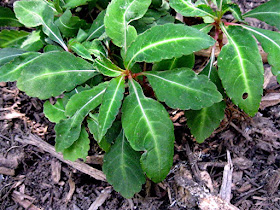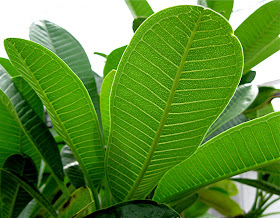
And I broke my own record for sweating....no way I'm going rest on my laurels with almost 10 years to go. One of the good things about being, well, large, is that sweating 10-15 lbs of water a day is no big deal. For Nancy, pictured spearing a huge ant mound, it'd be seriously dehydrating. Anyway 3 of 6 volunteers came in today despite the ridiculous humidity, the dewpoint hung in the 70F range, and enough heat to keep things on the edge of unbearable. Carmen came in early post orthopedic surgery and pre rehabilitation; Julie and Nancy followed and we made our first foray against the groundcovers.
Ironically, the groundcovers were the first things I remember loving about this garden. There are a lot of groundcovers and I mean more in the traditional sense of pachysandra, ophiopogon, liriope, carex, etc. I'm good with Graham Stuart Thomas's definition of a groundcover as anything that keeps the sun from hitting the soil, but for convenience sake I usually mean the commoner sorts. Any day in winter when there's no snow cover you can go to the Asian Collections, especially the older parts, and the world is magically green. I'm not a big winter guy in terms of embracing browns, grays, and whites. I like my green and I can get it here. Still.....
If you plant them, they will grow, and grow, and grow, becoming huge formless mats that swallow up small plants and steal water and minerals from even medium-sized shrubs. It was time to take action and we did. We took out a truckload of pachysandra and smaller quantities of ophiopogon, liriope, and hostas. I seem to remember actually digging a few Japanese Painted ferns that had invaded an important accession of
Rhodea. I love those ferns, still, everything in it's place.
Amanda made a point earlier this year that I'd not arrived at yet myself. To wit: when you let groundcovers grow unrestrictedly, they assume a configuration you'd never intended and frankly, it's often not a good shape. Groundcovers used properly are important visual elements in the garden but we need to confine them to configurations that are aesthetically appealing. It's a shame that we're just going in that direction on the eve of her, Amanda's, departure. I'll try to keep her posted.




























